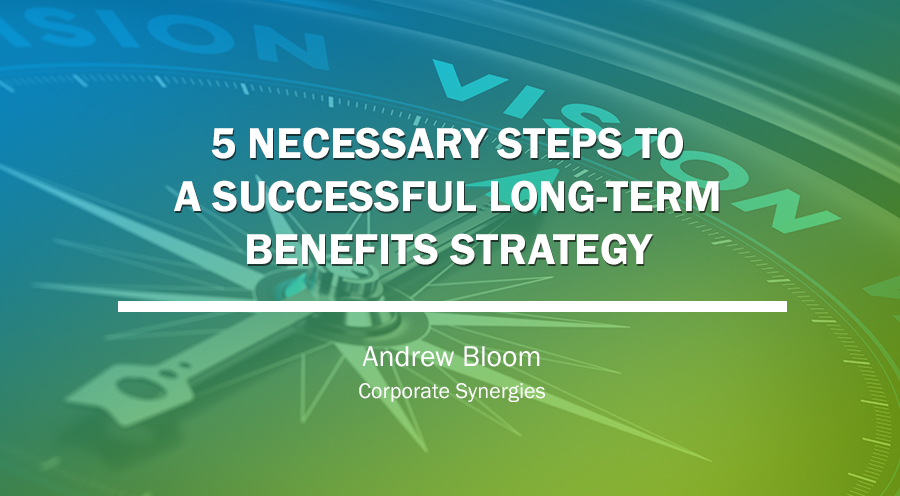The quest for a cost-effective and successful long-term benefits strategy can feel like a search for the Holy Grail. To most, it’s an elusive goal within the context of rising and unsustainable costs.
In “Monty Python and the Holy Grail,” King Arthur and his Knights of the Round Table sought to find the Holy Grail in a comedy of errors and unplanned circumstances. It made for a hilarious movie. But the group employee benefits world is no comedy. It’s filled with serious consequences if approached with the same nonsensical strategies that make a good sketch for John Cleese and friends. Yes, the journey is filled with challenges, but if you know how to navigate the land, you’ll find your way.
Let’s start with the understanding that group employee benefits represents one of the largest expenses in your organization. There should be no argument on that fact. Additionally, your benefits program is a key recruiting and retention tool for employees. Unfortunately, many organizations do not have a clear path or a long-term strategy to effectively manage their program.
A successful long-term benefits strategy seems akin to searching for the unattainable.
It’s easier said than done, especially when many HR and Finance professionals have conflicting objectives. HR’s mission is to design a program that is competitive in the marketplace for human capital needs while supporting the organization’s culture. Finance, on the other hand, is charged with managing to a budget by controlling expenses to mitigate year-over-year increases. The result, in spite of best intentions, leaves organizations unable to commit to a multi-year plan and opt in favor of living year-to-year.
So, how do you overcome this challenge?
Step 1:
Key HR and Finance stakeholders need to align on goals and objectives and remain engaged in the process throughout the year (not just at renewal). Once you achieve alignment, these objectives should be memorialized into a benefits philosophy. Why? So the collective team has guiding principles for future decisions.
Step 2:
Identify the cost drivers of the program. Many employers have little line of sight into how their plan is performing until it’s too late. Once you are staring down the barrel of a 25% increase, an organization may be forced to make swift changes to soften the blow to their bottom line rather than follow a strategic approach that comes with preparation. Unfortunately, this type of knee-jerk reaction only temporarily relieves the pressure and may create unintended consequences to the employee value proposition.
Step 3:
Understand where you were, where you are and where you want to be. After 25 years in the consulting industry, one thing I know for certain is there are only so many levers you can pull to rein in escalating benefit costs. Identify the levers and how far you want to pull them.
Step 4:
Determine success metrics. I have seen many organizations implement new tactics, such as a health savings account (HSA). When I ask them if it was successful, they can’t answer because they didn’t set an internal bar for success. That barometer will help you gauge success and determine what changes need to be made to your approach to achieve your goal.
Step 5:
Commit the plan to writing and review it periodically. Just like your company’s overall business plan, you will need to make adjustments along the way as your business changes.
Regardless of strategy, I recommend employers take steps toward a self-funding benefits model. Historically, self funding was for groups with 1,000 lives and above. But that’s no longer the case. Self funding provides that all-important line of sight into cost drivers because of access to claims data. Having a deeper understanding of the “why” behind costs allows an organization to implement a data-driven approach to the overarching benefits strategy. Self funding also provides more plan design flexibility and eliminates the internal costs that an insurance carrier builds into a plan for profit.
It’s more effective to create a benefits strategy that is sustainable over time, so when you inevitably endure a higher-than-normal renewal cycle, typically every three to five years, you are prepared to stay the course.
Consider timing.
When you make changes to a benefit plan is just as important as what changes you make. Evaluate the timing of benefit changes, how they are implemented and how adjustments will impact your workforce now and in the future.
For example, if you plan to add new voluntary benefits, such as indemnity plans, it may make sense to run them “off cycle” from the core medical benefits open enrollment season. This gives employees more time to conduct research about the new product option and make an educated decision.
Strive for simplicity.
I can’t stress this enough. The Affordable Care Act, an increase in voluntary benefit options, new funding models and benefit trends have created an enormous amount of noise in the insurance industry. Tune it out and simplify your process as much as you can. Your HR and Finance teams are overwhelmed and so are your employees. Instead of throwing new benefits at them each year, focus on educating them and making choices simple. In fact, any long-term benefits plan worth its weight always includes an education and communications component.
Benefit illiteracy is rampant, and confusion over options at open enrollment can have consequences for the employee throughout the plan year. If your employees choose their benefits online, spend the open enrollment meeting educating them on how to buy and consume insurance, rather than just what the benefit choices are for the plan year, or how to use the online enrollment tool. You should also communicate throughout the year, rather than just at open enrollment to support employees’ understanding of their benefits program. Benefits clarity is possible with effective employee education and communications.
Identify other areas where employees might struggle. One trend is to offer transparency tools to help them choose a doctor or specialist. But be aware that the sheer number of doctors in a given list can be overwhelming. Rather than offering employees a choice of 50 doctors, narrow it down to five providers with the best healthcare outcomes.
Making it simpler for employees to be better consumers of healthcare will help you cut costs and get on the right path to a successful long-term benefits strategy. Of course, you’ll have to check in each year and consider making small adjustments to the program, and data will help guide these changes. Adjustments should all be in service of a long-term benefits strategy. If you begin your plan by asking the question, “Where were we, where are we now and where do we want to be in the future?” you’re halfway there.
You may eventually find that your Holy Grail is within reach.





